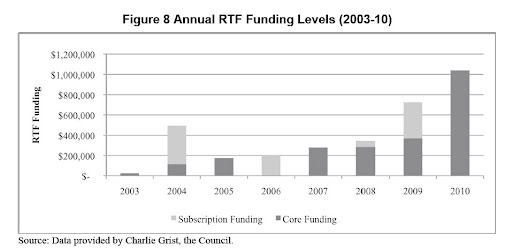Build It Solar - Clothesline Thoughts
Drying clothes in a gas or electric dryer is energy intensive. An electric dryer uses about 2.3 KWH of electricity to dry one load. In addition, as the dryer vents its exhaust out of the house, new air is pulled into the house to replace it, and in the winter, this new air must be heated. If the temperature outside is (say) 30F, it takes about another 2 KWH to heat this incoming air. In climates where AC is used in the summer, air pulled in by the dryer must be cooled. So, drying one load can takes from 2.3 KWH to 4.3 KWH for each load -- a lot. If you do a load a day, then you probably spend about 1000 KWH per year on drying energy.
I'll figure 200 loads in a year, for a two-adult household. Without AC, figure 860 KWH. Do the Math on that.
One therm is 29.3 KWH and 12 pounds CO2. 860 KWH is 29.4 therms and 350 pounds of CO2. If I save half of that, it is about fifteen therms, $30, 180 pounds CO2.
Where is my error?
This is free sharing of discoveries in matters of methods, materials and policies for energy conservation in our homes. Discoveries are mainly in work I do with business Phillip Norman Attic Access, in metro Portland, Oregon. Please see my web site for this work, with my contact information: https://sites.google.com/site/phillipnormanatticaccess/ I am Phillip Norman , 1-503-255-4350. Upon request I will email a printable pdf of any post, with translation and size as you wish.
Wednesday, September 29, 2010
More Thought of Carbon Footprint: Shunning My Clothes Dryer
It is time at last to curtail my luxury of mindlessly tossing laundry in my natural-gas clothes dryer. The conversion from electric heat in a hand-me-down, free dryer was ticket for ease that I let go through another Summer. What is the amount of my savings opportunity?
I refer first to one of my clothesline shopping discoveries. I will just accept for now that a two-person household, with half-time resort to clotheslines, may save 500 pounds of CO2 per year. The saving is sizable, judging by math for my total carbon footprint, about 20,000 pounds of CO2 per year. Every measure that might save another 1000 pounds of CO2, will be painful.
The cost of a durable, convenient and presentable clothesline seems to be more than $250. How does this pan out in a payback calculation, the Insulation Math?
A therm corresponds to emission of about 12 pounds of CO2. 500 pounds is 42 therms. At $2 per therm, my saving is $84 per year. A $300 clothesline cost is repaid in less than four years, 28% simple return. Worth doing. Worthy of incentives. Spending $300 will not be extravagant.
I refer first to one of my clothesline shopping discoveries. I will just accept for now that a two-person household, with half-time resort to clotheslines, may save 500 pounds of CO2 per year. The saving is sizable, judging by math for my total carbon footprint, about 20,000 pounds of CO2 per year. Every measure that might save another 1000 pounds of CO2, will be painful.
The cost of a durable, convenient and presentable clothesline seems to be more than $250. How does this pan out in a payback calculation, the Insulation Math?
A therm corresponds to emission of about 12 pounds of CO2. 500 pounds is 42 therms. At $2 per therm, my saving is $84 per year. A $300 clothesline cost is repaid in less than four years, 28% simple return. Worth doing. Worthy of incentives. Spending $300 will not be extravagant.
Tuesday, September 21, 2010
An Especial Obligation to Honesty
Bonneville Power Administration is a rare government creation that is self-funded, with much money from too-abundant power sales, to spend as it chooses. The money is a corruptible basis of BPA influence. That is why BPA has an especially large need of public scrutiny. Actions to that end include this, of March 24, 2010:
AN EVALUATION OF THE REGIONAL TECHNICAL FORUM – Final Report –
http://www.nwcouncil.org/rtf/meetings/2010/04/RTF_Eval_EMI240310.pdf
This report is kind to its sponsors, accepting exponential growth of RTF.
The scrutiny is not always voluntary. Among scholarly reviews, I have picked as significant, this PhD thesis, dated November 27, 2007:
The Columbia River's region: Politics, place and environment in the Pacific Northwest, 1933--present
https://scholarsbank.uoregon.edu/xmlui/handle/1794/6280
AN EVALUATION OF THE REGIONAL TECHNICAL FORUM – Final Report –
http://www.nwcouncil.org/rtf/meetings/2010/04/RTF_Eval_EMI240310.pdf
This report is kind to its sponsors, accepting exponential growth of RTF.
The scrutiny is not always voluntary. Among scholarly reviews, I have picked as significant, this PhD thesis, dated November 27, 2007:
The Columbia River's region: Politics, place and environment in the Pacific Northwest, 1933--present
https://scholarsbank.uoregon.edu/xmlui/handle/1794/6280
Subscribe to:
Posts (Atom)
